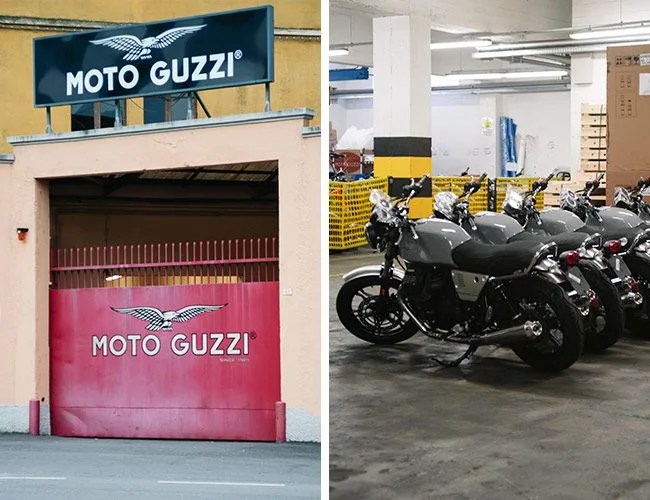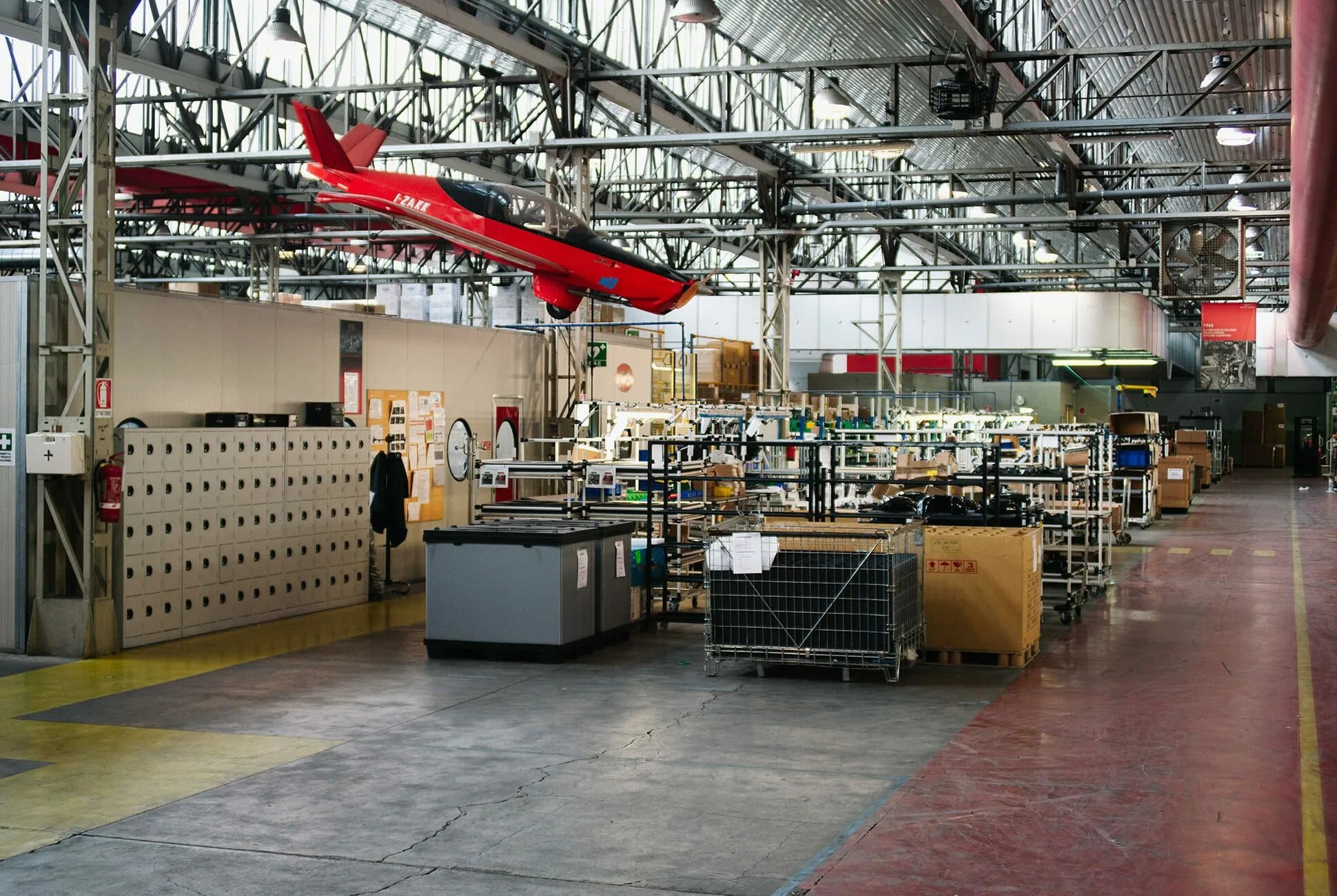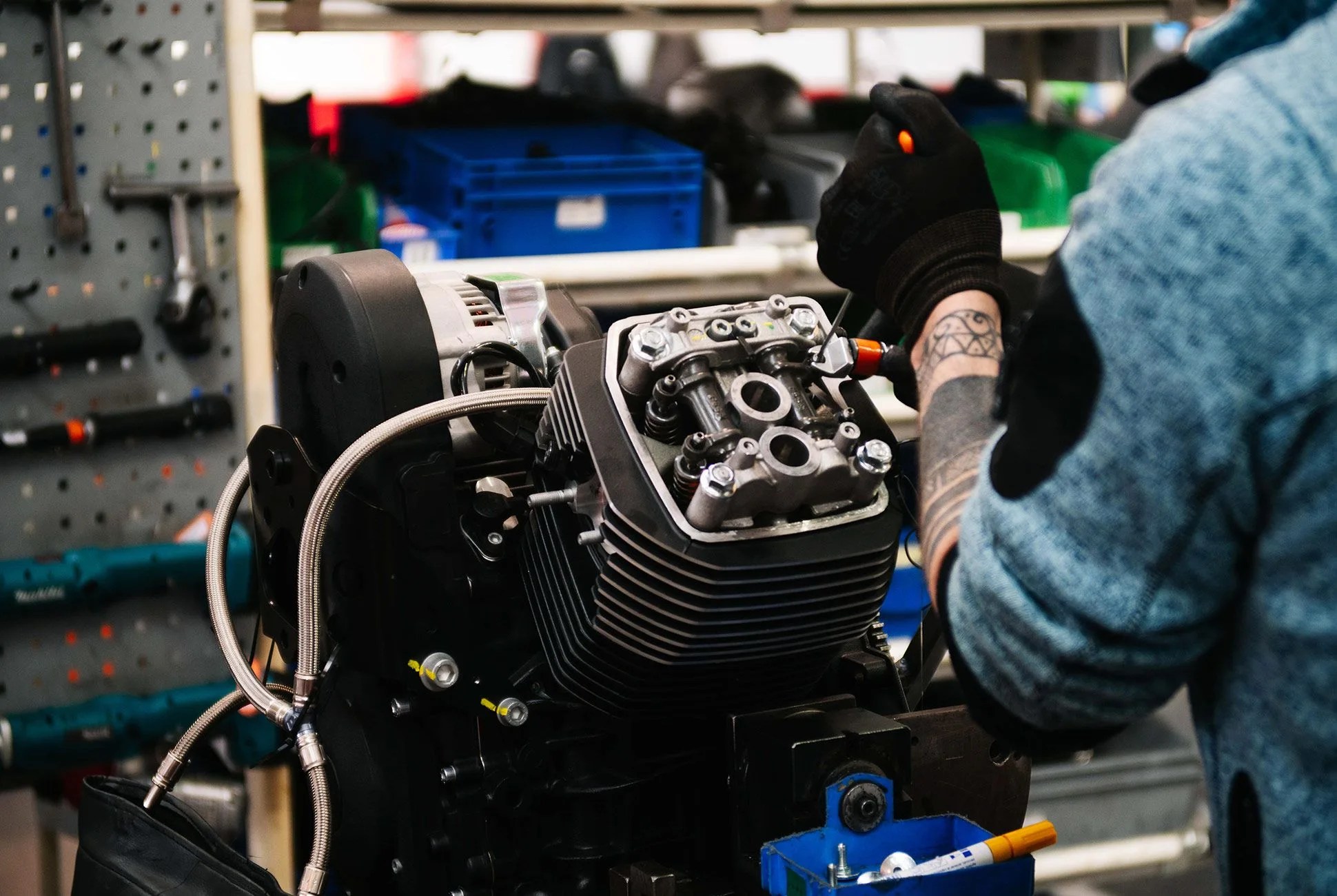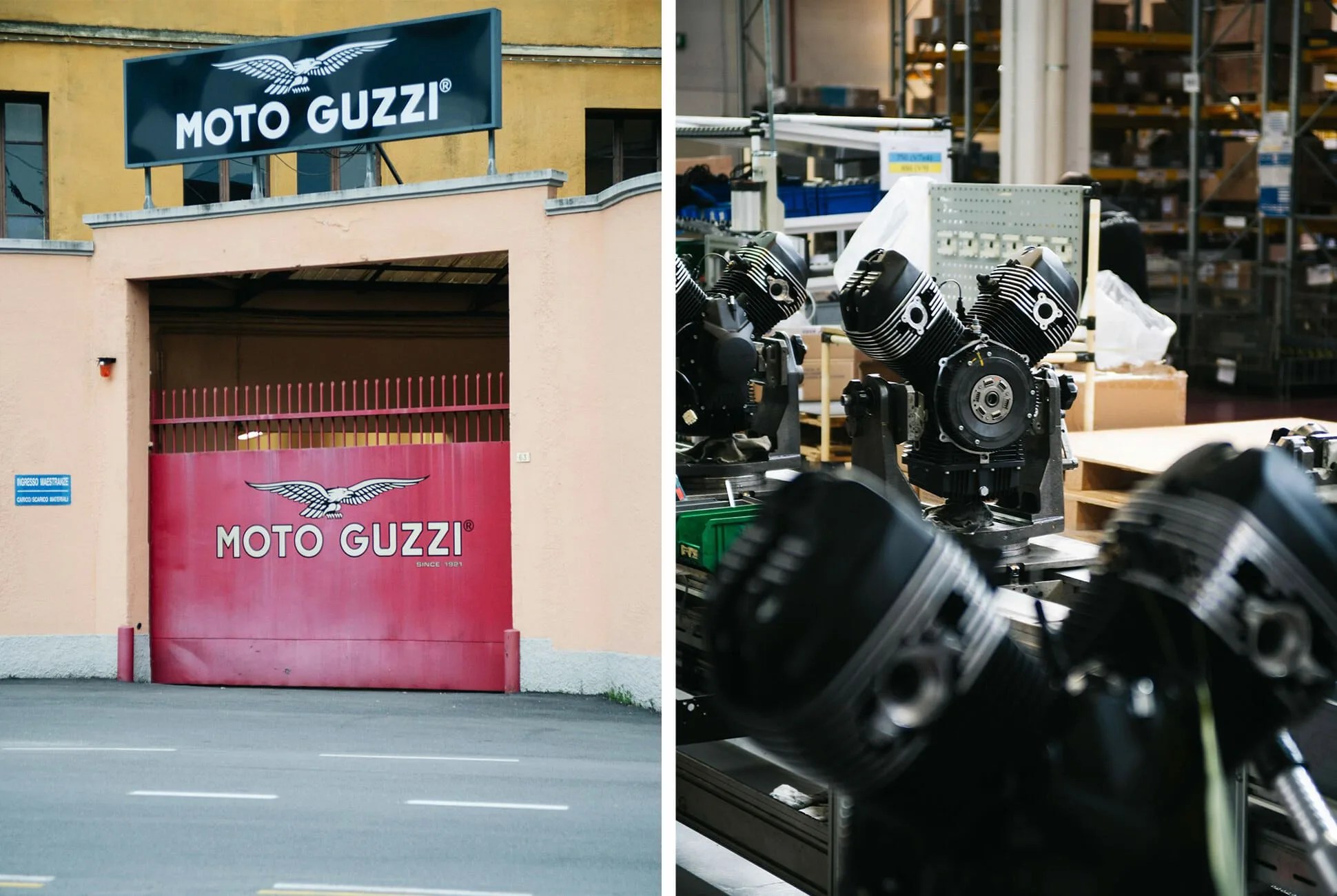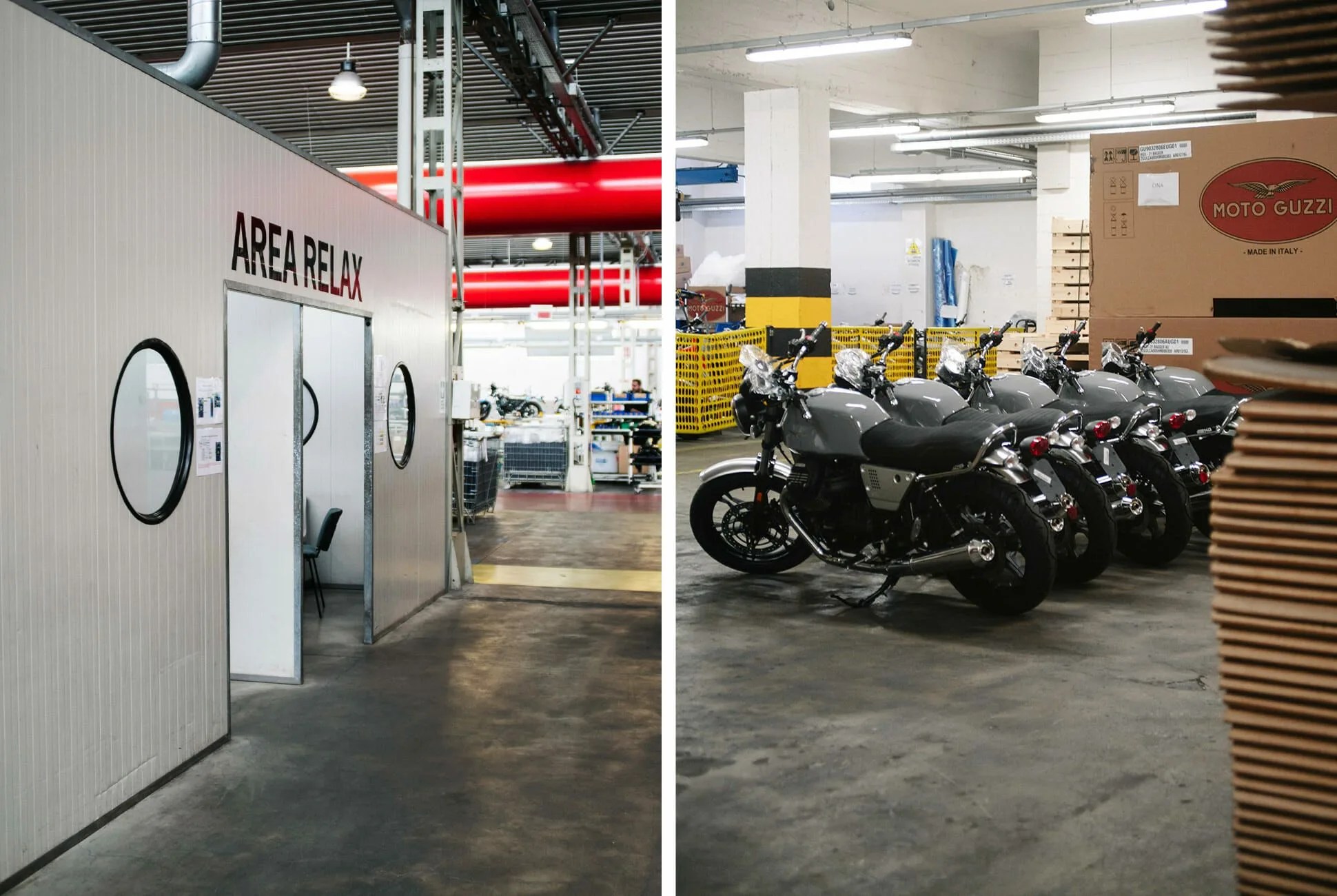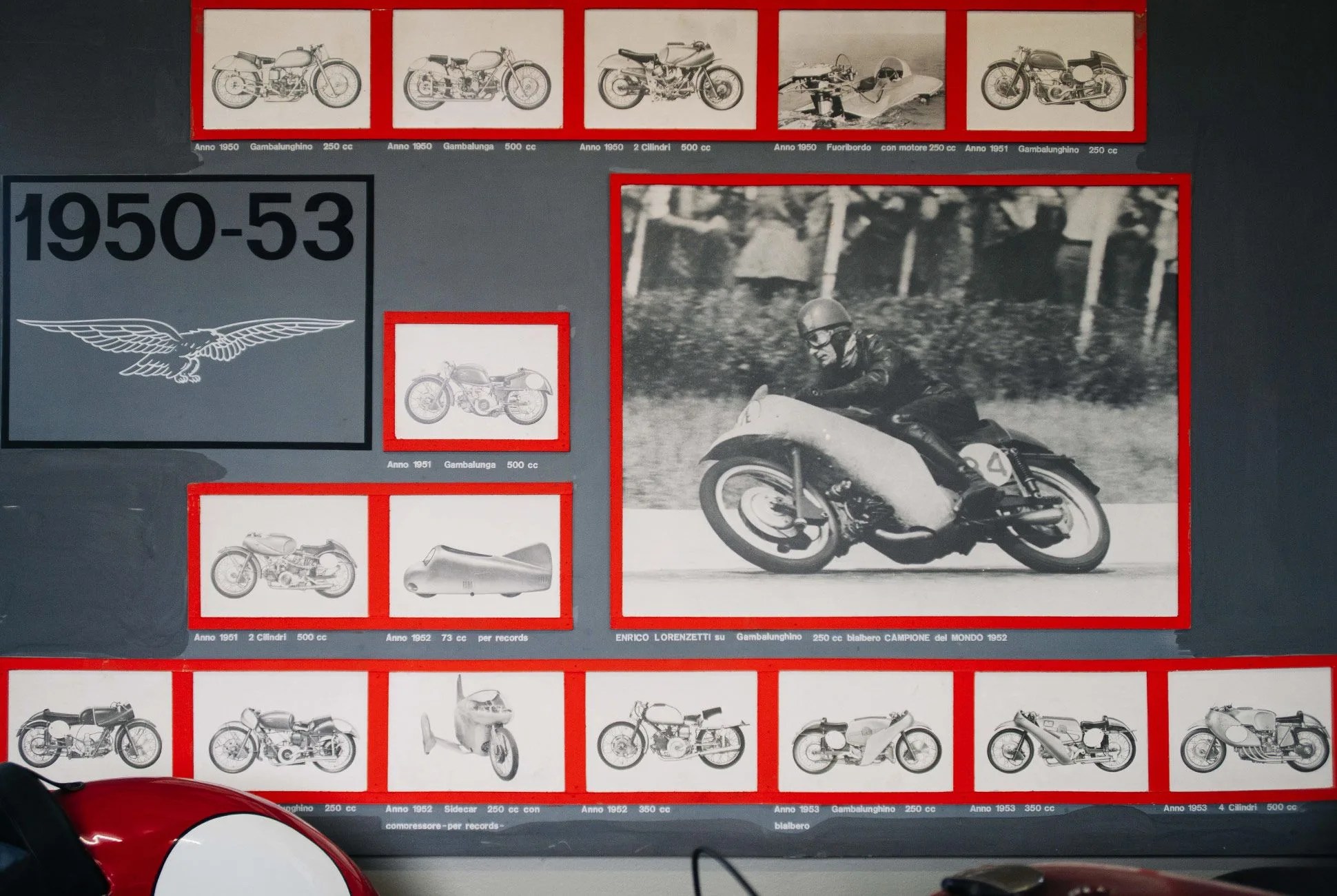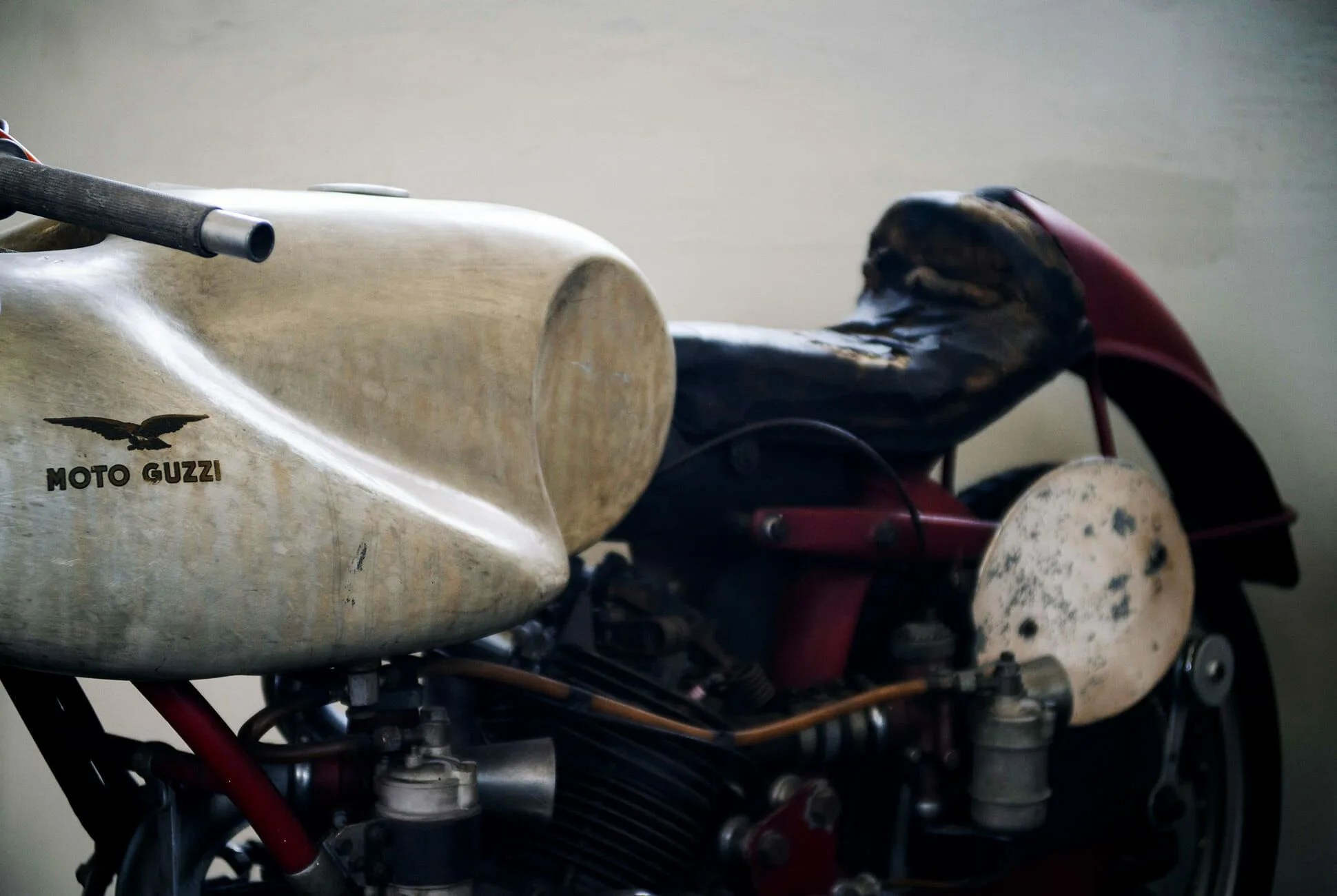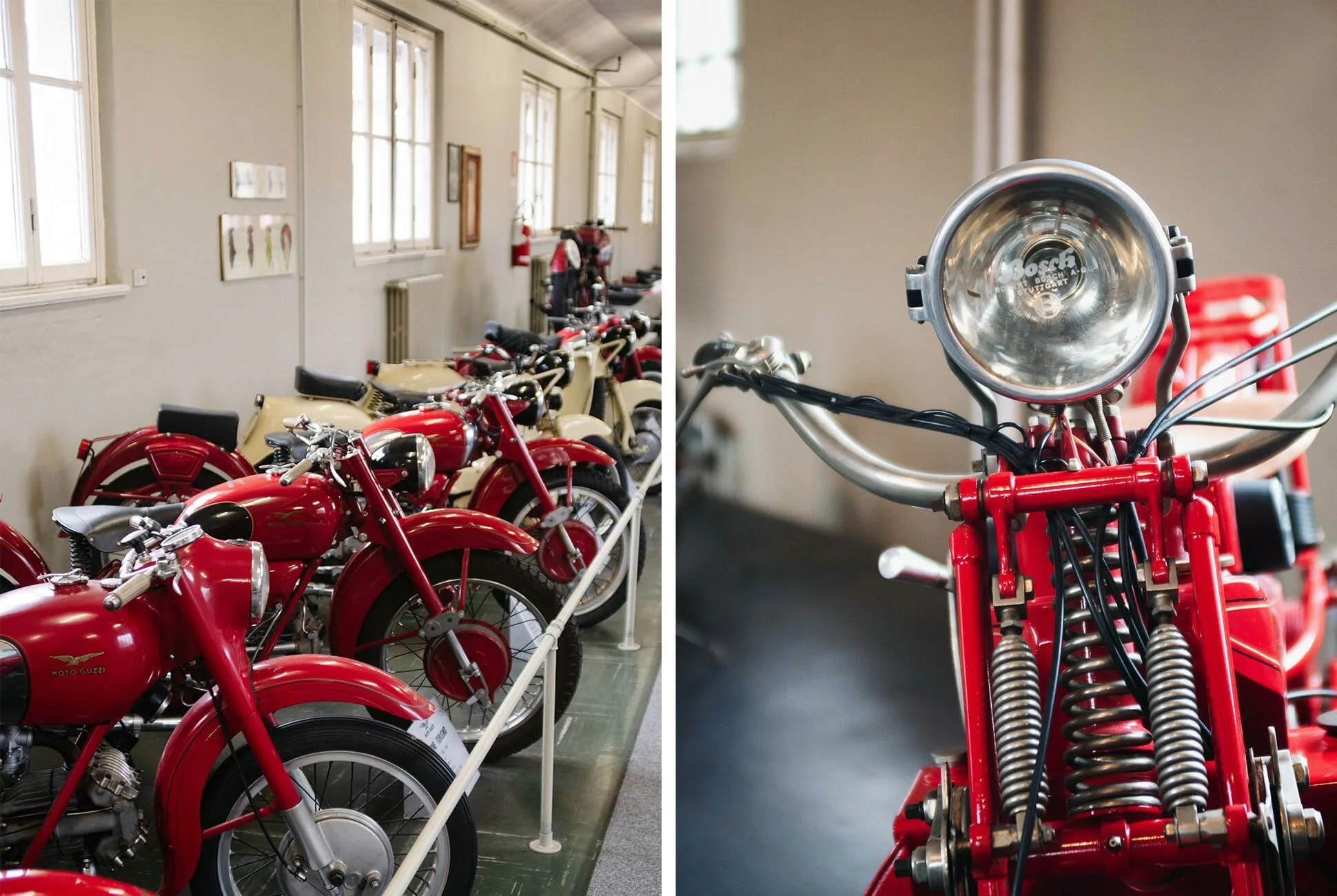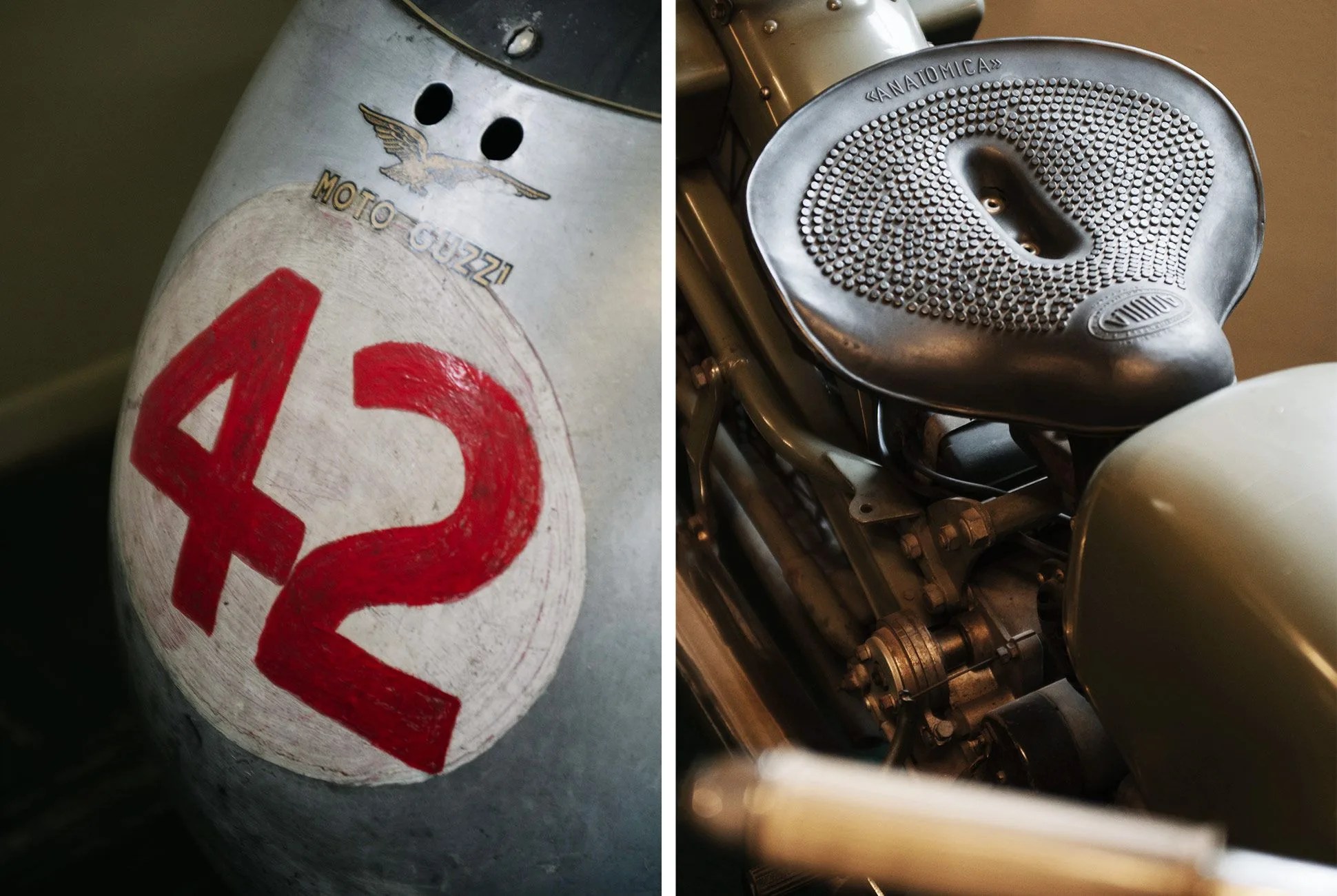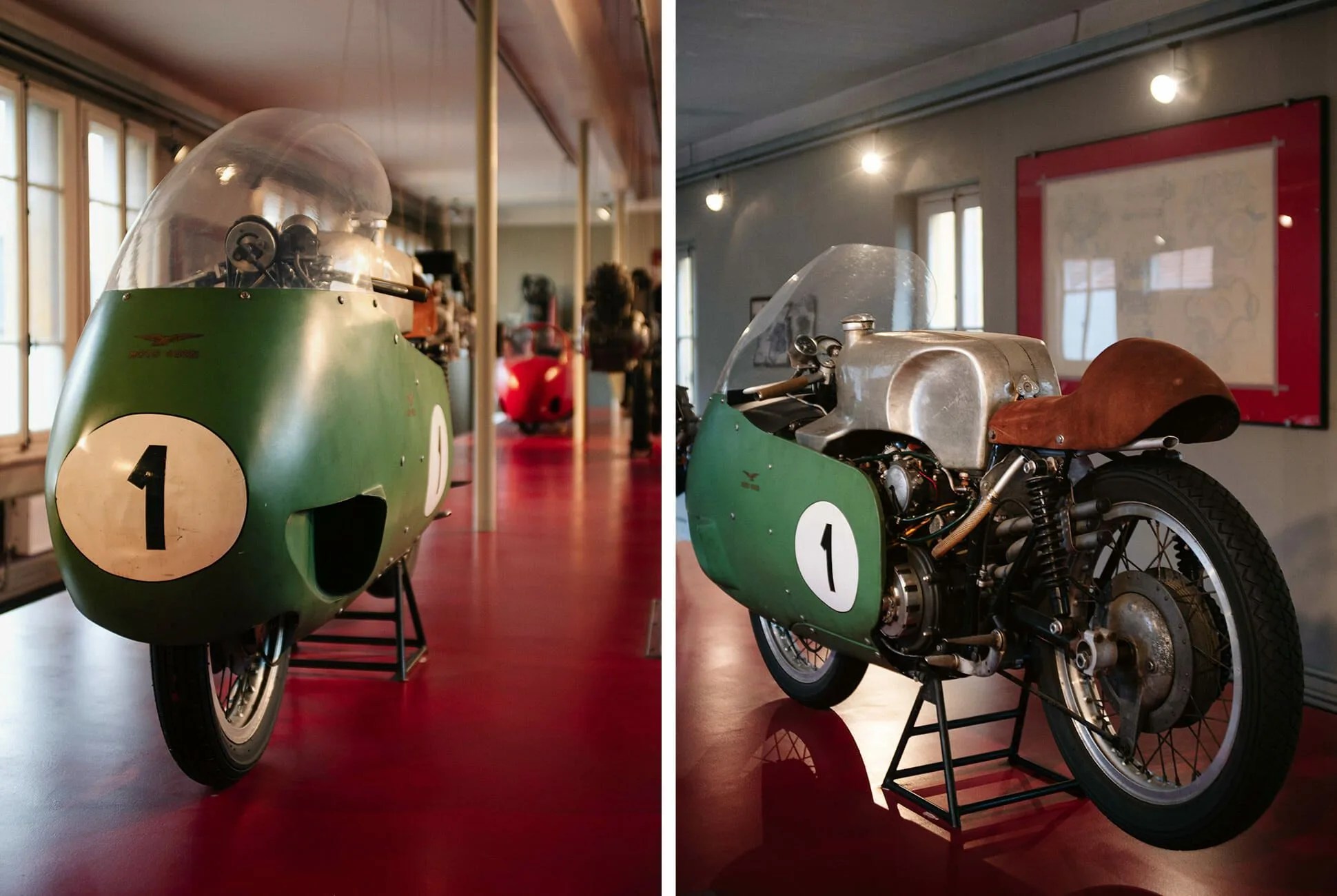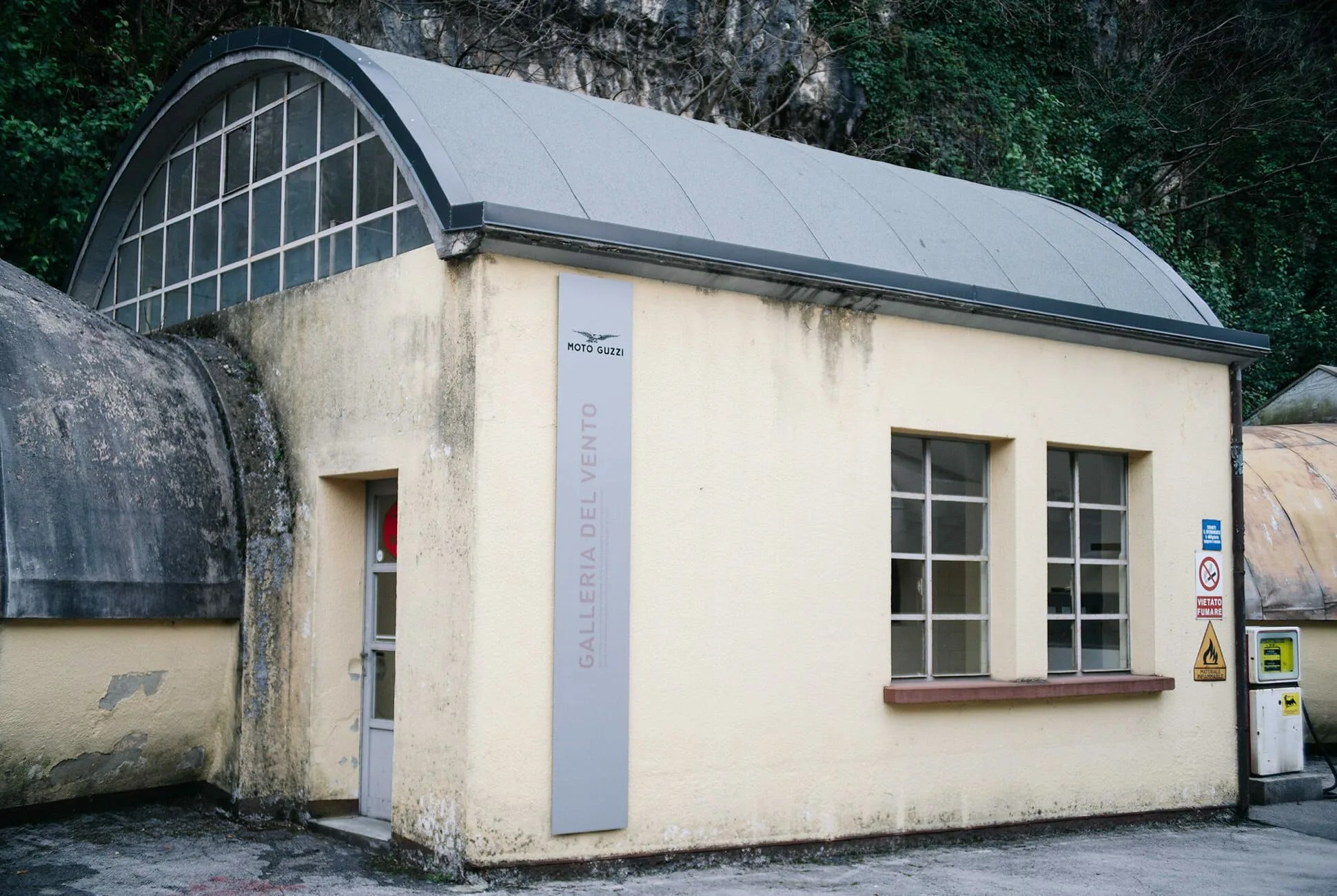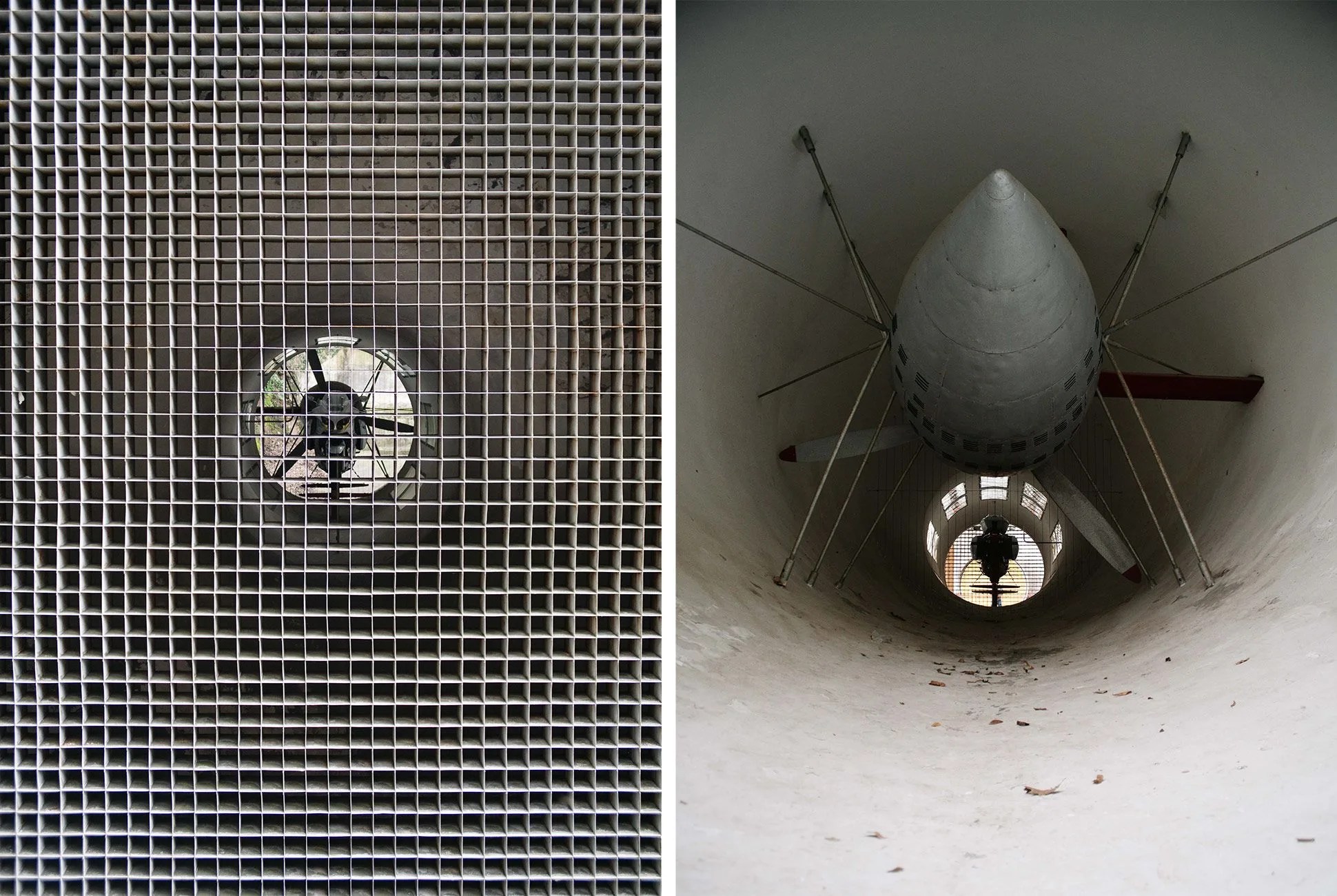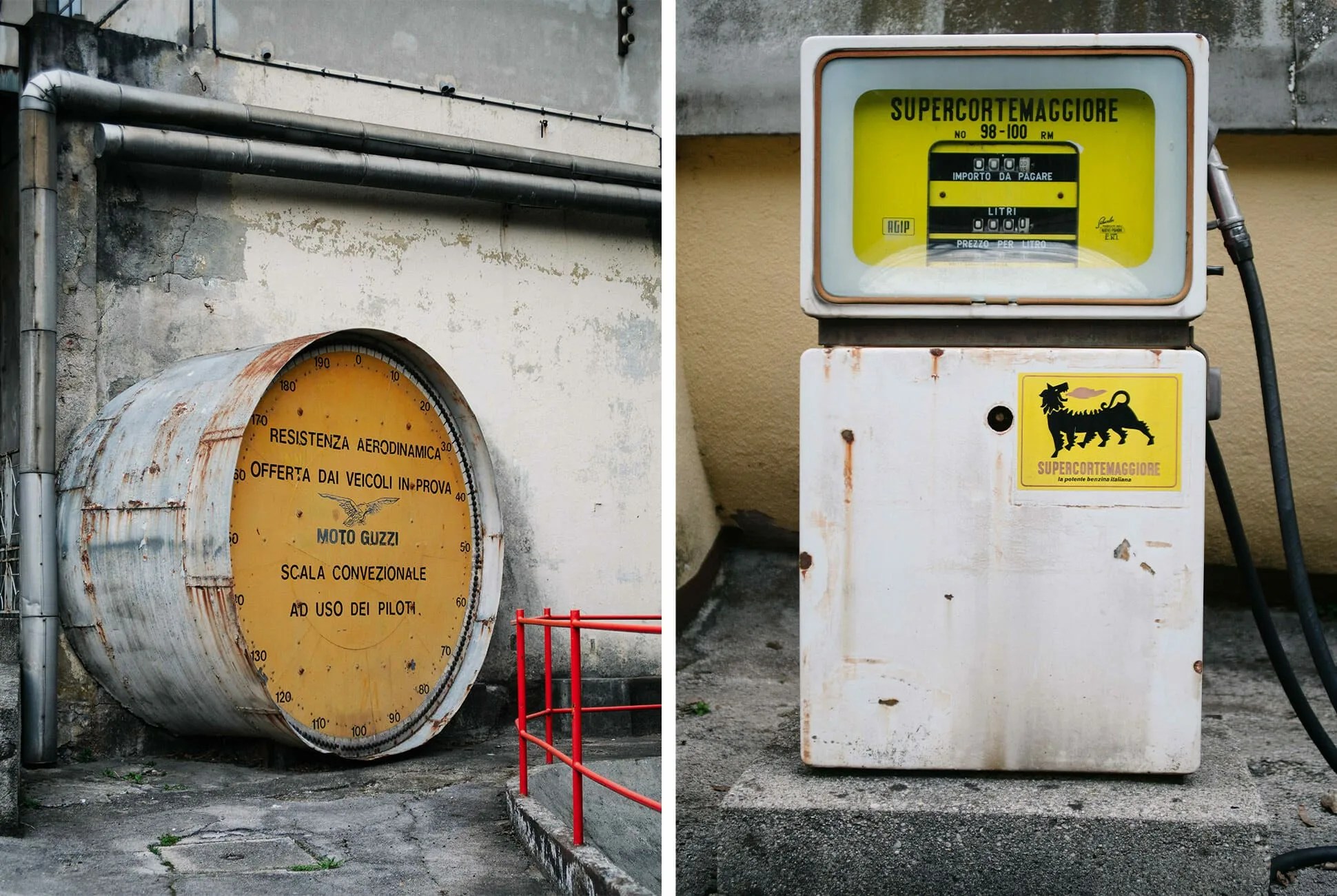13 photos
Moto Guzzi started constructing bikes in the shadow of giant granite and limestone mountain peaks in 1921, and has continued to do so ever since without interruption. Over the course of the last 97 years, the company has pushed the boundaries of motorcycling both on the street and on the track, creating some of the most timeless two wheel silhouettes out there. And it’s done so while remaining a small, Italian-owned company. I think it’s the laser-focused nature of the brand that has kept them afloat all these years: Moto Guzzi motorcycles are imbued with both the spirit of the workers that build them and the mystique of the Italian mountains close by.
After having seen the bikes in production and felt the rhythm of the factory workday, it’s now impossible for me not to romanticize Moto Guzzi. The care and attention to detail that the workers give each motorcycle was immediately apparent when I stepped onto the factory floor — where one engine is made every six minutes on a stop and go assembly line. There are 24 stations in total. Between March and October, which is the high season for production, a staff of around 150 mans the fort. At full capacity, they’re cranking out an average of 65 handbuilt bikes per day. Impressive.
My walk through the two-story Moto Guzzi museum was possibly more enlightening than seeing the production facility. I’m no fanboy — a “Guzzisti” — but I do love a good origin story, and Moto Guzzi has a special one. Following the First World War, Giorgio Parodi and Carlo Guzzi set up Società Anonima Moto Guzzi with the help of Parodi’s father, a successful shipping magnate in Genoa. Giorgio didn’t want the spotlight; he just wanted to build top quality bikes, so the pair used Carlo’s last name to found the company that would become synonymous with top-tier Italian motorcycles. To honor their friend and fellow aviator, Giovanni Ravelli, who had died in a test flight accident in 1919, an eagle with wings fully spread was chosen as the logo for their newly formed company.
Right from the start, Moto Guzzi was building quality bikes. The first production model, the Normale, made just eight horsepower from a single horizontal cylinder at a time when everyone else was using a vertical cylinder setup. Success in racing began right away with a victory at the 1921 Targa Florio, and until Moto Guzzi pulled out of competition in 1957 the bikes were dominant, amassing 14 world GP championship titles and 11 Tourist Trophy titles, including a win at the Isle of Man TT by racer Ombono Tenni, the first Italian to do so.
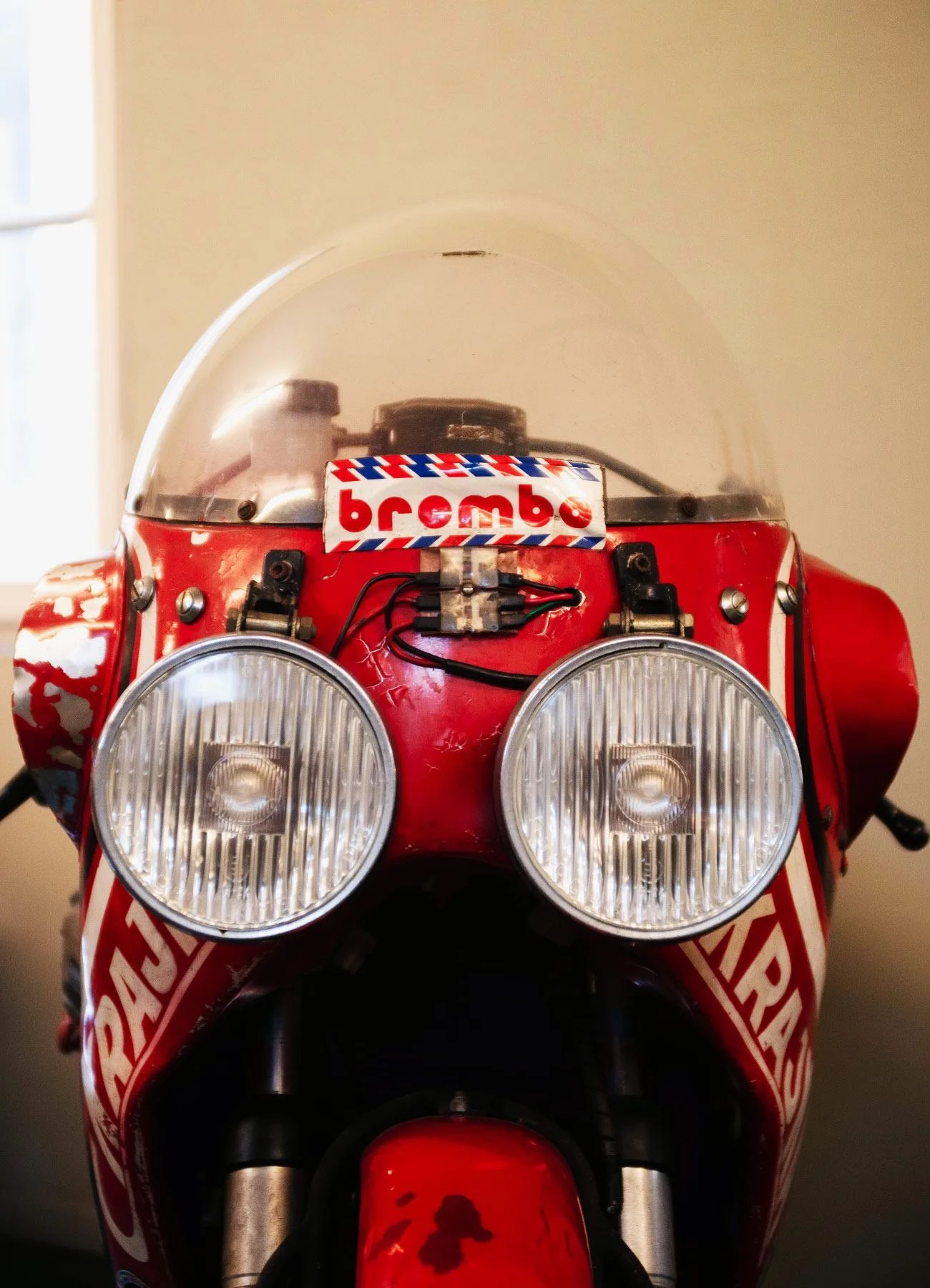
Success in racing ran parallel to success in sales, as two early Moto Guzzi models held the distinction of being the best selling motorcycles in Europe in their respective segments for over a decade. Then, in 1950, Moto Guzzi became the first motorcycle company to build and use a wind tunnel as part of their development process. The early bikes look as insane now as I’m sure it did then.
